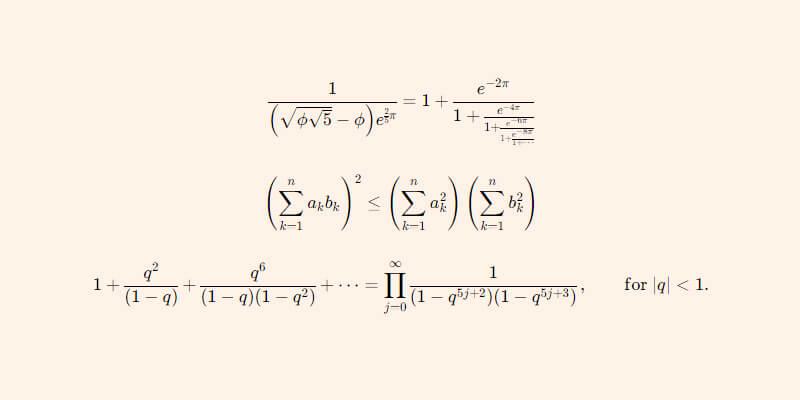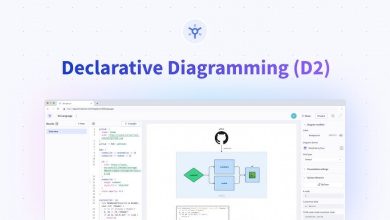KaTeX: Revolutionizing Math Typesetting on the Web
In the realm of web development, presenting complex mathematical expressions in a clean and readable format has always been a challenge. Historically, displaying math on the web required extensive reliance on LaTeX, a typesetting system that, while powerful, is cumbersome and difficult to implement efficiently in a browser environment. This problem was exacerbated by the slow rendering times and lack of cross-browser compatibility of LaTeX-based solutions. Enter KaTeX, a revolutionary math typesetting library that promises to solve these challenges while enhancing performance, usability, and accessibility on the web.
Introduction to KaTeX
KaTeX is an open-source JavaScript library developed by Emily Eisenberg and first released in 2013. It was designed with one main goal in mind: to enable the fast rendering of LaTeX-style mathematical equations on websites. Unlike traditional LaTeX implementations, which often rely on server-side processing or heavy client-side frameworks, KaTeX uses pure JavaScript to render math in a web browser, making it faster and more responsive. The library is optimized to handle large documents and complex mathematical expressions without sacrificing performance.
KaTeX is widely appreciated for its speed, accuracy, and ability to work seamlessly across all modern web browsers. As a result, it has become the go-to tool for developers, educators, and researchers who need to display mathematical formulas in an accessible and visually appealing way.
Key Features of KaTeX
One of the key aspects that sets KaTeX apart from other math typesetting libraries is its performance. KaTeX is designed for speed. Unlike other libraries that can take several seconds to render complex equations, KaTeX renders math almost instantaneously, even with lengthy or intricate formulas. This makes it particularly useful for real-time applications such as online learning platforms, dynamic content generation, and interactive websites.
Here are some notable features of KaTeX:
- Fast Rendering: KaTeX is one of the fastest math typesetting libraries available. It is capable of rendering large numbers of equations on a page without significant performance degradation.
- Full LaTeX Support: KaTeX supports almost all LaTeX math symbols and commands, including advanced features like matrices, fractions, integrals, and summations. This makes it highly versatile for any mathematical expression, from basic algebra to advanced calculus.
- No External Dependencies: Unlike other solutions, KaTeX requires no external dependencies, making it lightweight and easy to integrate into web applications. It works entirely in the browser, meaning that it does not require server-side rendering or complex setup processes.
- Cross-Browser Compatibility: KaTeX works flawlessly across all modern browsers, including Chrome, Firefox, Safari, and Edge. This ensures that your mathematical content will be consistent and accessible to all users, regardless of the browser they use.
- Customizable and Extensible: KaTeX is highly customizable, allowing developers to adjust the style, font, and size of mathematical formulas to match the design of their website. Additionally, it is extensible, allowing developers to add custom commands and features as needed.
- Rich Documentation and Community Support: As an open-source project, KaTeX has a strong community of contributors and users. The project is actively maintained on GitHub, where users can report issues, contribute to development, or request new features. The documentation is comprehensive, making it easy for users to get started and troubleshoot any problems.
- Semantic Indentation and Comments: KaTeX supports line comments using the
%token, enabling users to add helpful annotations or explanations within their LaTeX code. However, KaTeX does not include support for semantic indentation, which means that mathematical formulas cannot be indented for hierarchical purposes. This is an intentional design choice to keep the syntax simple and focused solely on rendering equations.
How KaTeX Works
At its core, KaTeX is a JavaScript library that parses LaTeX input and translates it into HTML elements that can be displayed in the browser. The process begins when a LaTeX equation is provided as input to KaTeX, either through a simple text string or embedded within a web page. The library then parses the LaTeX code and constructs an internal representation of the equation, which is then converted into HTML and CSS for display.
The rendering process takes place entirely in the browser, and KaTeX uses efficient algorithms to ensure that even complex mathematical formulas are rendered in a fraction of a second. This speed is achieved through KaTeX’s lightweight design, which eliminates the need for large and complex dependencies.
The Development and Evolution of KaTeX
Since its release in 2013, KaTeX has undergone continuous development and improvement. The library has received numerous updates that have expanded its capabilities, fixed bugs, and improved performance. Early versions of KaTeX focused on basic rendering and support for common LaTeX symbols, but over time, the library has added support for more advanced features, including support for additional LaTeX commands, better font rendering, and more efficient parsing.
The open-source nature of KaTeX has allowed it to grow into one of the most widely used math typesetting libraries available today. The project is hosted on GitHub, where it has amassed a large community of contributors and users. As of today, KaTeX has more than 340 issues reported on GitHub, demonstrating its active user base and ongoing development.
Use Cases and Applications
KaTeX has a wide range of applications across various fields, particularly in the world of academia and online education. Below are some examples of how KaTeX is used:
- Educational Platforms: Many online learning platforms, such as Khan Academy and Coursera, use KaTeX to display mathematical equations and formulas. This allows students to view complex math content on any device without requiring special software or configurations.
- Scientific Publishing: Researchers and academic publishers rely on KaTeX to present mathematical equations in research papers, articles, and textbooks. Its ability to render math quickly and accurately makes it ideal for scientific publications.
- Online Blogs and Tutorials: Bloggers and educators who write about mathematics or related fields can use KaTeX to create clean, readable equations within their posts. This is especially useful for creating interactive tutorials or step-by-step guides that involve mathematical problem-solving.
- Interactive Websites: Websites that require real-time rendering of math, such as online calculators or math problem solvers, benefit from KaTeX’s speed and efficiency. With KaTeX, developers can create dynamic content that is both visually appealing and functionally effective.
- Math and Engineering Software: Software developers working on mathematical or engineering applications use KaTeX to provide a better user experience when inputting or displaying equations.
KaTeX vs. Other Math Typesetting Libraries
While KaTeX is a dominant player in the math typesetting space, there are other libraries that offer similar functionality, such as MathJax and MathML. Here’s a quick comparison of KaTeX with these alternatives:
- KaTeX vs. MathJax: MathJax is another popular JavaScript library for rendering math on the web, but it is known for being slower and more resource-intensive compared to KaTeX. While MathJax provides a wider range of features, such as support for MathML and HTML5, KaTeX is much faster at rendering LaTeX math and does not require external dependencies.
- KaTeX vs. MathML: MathML is a markup language specifically designed for mathematical content. While MathML has been around for a long time and is supported by many browsers, it is not as widely adopted as LaTeX. KaTeX offers more extensive support for LaTeX math syntax, making it a more popular choice among web developers who need to display complex math equations.
Future of KaTeX
Looking ahead, the future of KaTeX seems bright. The project continues to evolve, with regular updates that improve performance and add new features. KaTeX’s active GitHub community is dedicated to maintaining and expanding the library, ensuring its continued relevance in the ever-changing world of web development.
One area of potential growth for KaTeX is the expansion of its support for more advanced LaTeX features. While KaTeX already supports a wide range of LaTeX commands, there are still some commands and packages that are not fully supported. As the library continues to mature, it is likely that KaTeX will add support for these features, making it an even more powerful tool for mathematical typesetting.
Conclusion
KaTeX is a powerful and efficient tool for rendering mathematical equations on the web. Its speed, ease of use, and compatibility with LaTeX make it an ideal choice for developers, educators, and researchers who need to display complex math content on websites. With continuous development and an active community of contributors, KaTeX is poised to remain at the forefront of math typesetting for the web for years to come. Whether you’re building an educational platform, writing a research paper, or developing a dynamic web application, KaTeX provides a fast, reliable, and easy-to-use solution for rendering math on the web.





